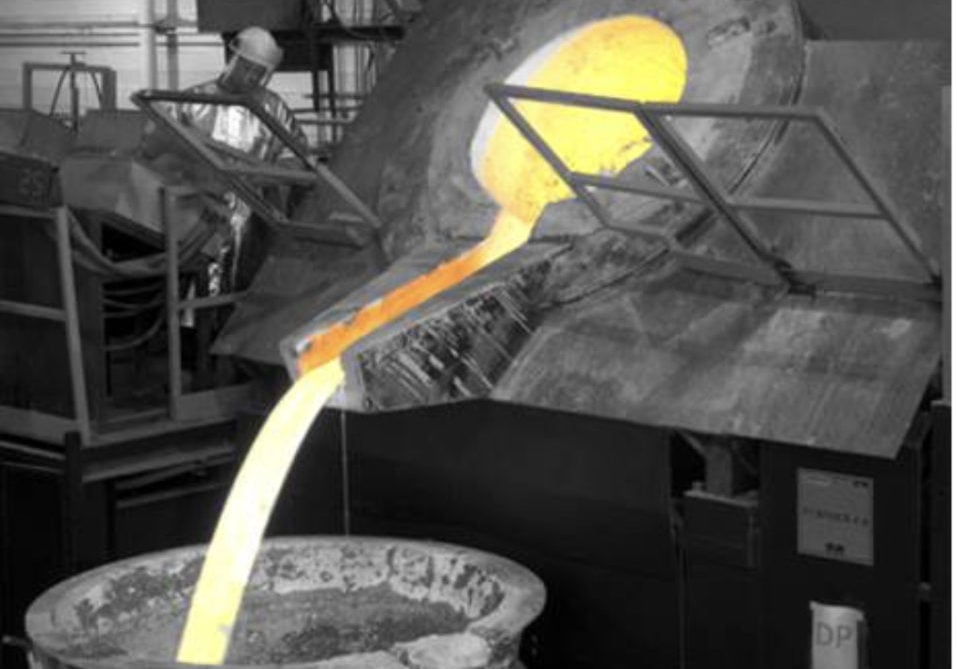
US polysilicon company Highland Materials has signed a long-term lease for the site of a planned “next-generation” polysilicon production facility in Tennessee.
Pivotal Manufacturing Partners – an industrial real estate investor – bought 140 acres of land in Hawkins County, Tennessee last week at the site of the former Phipps Bend nuclear plant. Part of that land has been leased to Highland Materials to build a “world-class, US$1 billion+ advanced manufacturing facility”.
Try Premium for just $1
- Full premium access for the first month at only $1
- Converts to an annual rate after 30 days unless cancelled
- Cancel anytime during the trial period
Premium Benefits
- Expert industry analysis and interviews
- Digital access to PV Tech Power journal
- Exclusive event discounts
Or get the full Premium subscription right away
Or continue reading this article for free
Based on previous plans, the site is likely to have 16,000MT of annual nameplate capacity. Highland Materials received US$256 million in Section 48C Qualifying Advanced Energy Project Credits in April 2024 to support a polysilicon production facility in an unnamed location, which it said would have 16,000MT capacity upon first operations and expand to 20,000MT in four years.
Highland said it chose the Phipps Bend site because of its “exceptional power infrastructure, strategic location within the TVA region, and development-ready environment capable of supporting large-scale, high-precision manufacturing.”
“Partnering with Pivotal Manufacturing Partners is a critical step needed to move the Highland polysilicon manufacturing facility forward at Phipps Bend” said Richard Rast, CEO of Highland Materials.
US Polysilicon production – an uncertain prospect
Back in 2024, PV Tech Premium heard that Highland Materials’ polysilicon plant could be a “game-changer” for US solar manufacturing, given the material’s strategic importance in the solar supply chain and China’s global dominance of polysilicon production.
However, since Donald Trump’s “One, Big, Beautiful Bill” act, the prospects for a domestic solar supply chain are tinged with fresh uncertainty.
There are new restrictions on receiving manufacturing tax credits based on the the influence of “Foreign Entities Of Concern” (FEOC) in US facilities. This amounts to Chinese influence, for solar.
Highland Materials’ planned polysilicon facility is unlikely to fall foul of these restrictions, but the further up the supply chain you get, the harder it is to avoid FEOC involvement, as China and Chinese-backed companies dominate production of solar-grade polysilicon, wafers and cells.
Further restrictions to the deployment subsidies for solar PV (ITC & PTC) could see the US market halve in the next few years, PV Tech Premium heard from Christian Roselund, senior policy analyst at Clean Energy Associates. This would be bad news for most US solar manufacturers, as the US market is their only realistic option for sales.
A shrinking pool of downstream manufacturers would mean fewer opportunities to sell US polysilicon. If wafer and cell capacity come online in the US, Highland Materials will be well-placed to supply it with domestic polysilicon; however, there is currently no wafer capacity and a limited amount of cell production in the US.
Hanwha Qcells is planning wafer and cell manufacturing capacity in Georgia, though in January it signed a polysilicon supply deal with Korean producer OCI Holdings.
Domestic polysilicon will also be more expensive than imported product, which brings the US tariff regime into play. With the sunset of tax credits for solar deployments in a few years, developers will have to weigh up the cost of domestic and imported products without the previous tax incentives to buy from US producers. It isn’t currently clear whether US polysilicon will be competitive on price, even with tariffs in place, as the global polysilicon price has been as low as US$4.4 per kilogram in the last year.
On the plus side, international polysilicon prices are rising and there are rumours that the biggest Chinese firms will eradicate a big chunk of the country’s excess production capacity to curb the unsustainable low prices. This could make US polysilicon more attractive, price-wise.
Moreover, Highland Materials says it has a “unique, patent protected silicon purification technology” which is different from the industry standard Siemens process. It claims its method reduces capital cost by 50% and operating cost by 40%, as well as reducing power consumption and carbon emissions.
More speculatively, last week CEA warned of renewed detainments of solar products entering the US under the Uyghur Forced Labor Prevention Act (UFLPA) after cells destined for Qcells’ facility in Georgia were reportedly stopped at the border. Polysilicon has been closely associated with the Xinjiang region of China, where forced labour allegations are concentrated. Greater UFLPA enforcement could create more demand for domestic, or at least non-Chinese, polysilicon and wafers/cells, as developers seek supply certainty. This could benefit Highland Materials in the long-term, if downstream manufacturing capacity picks up.






